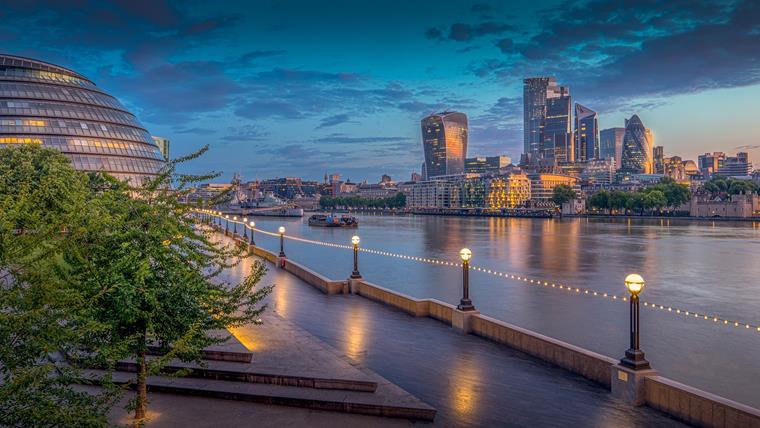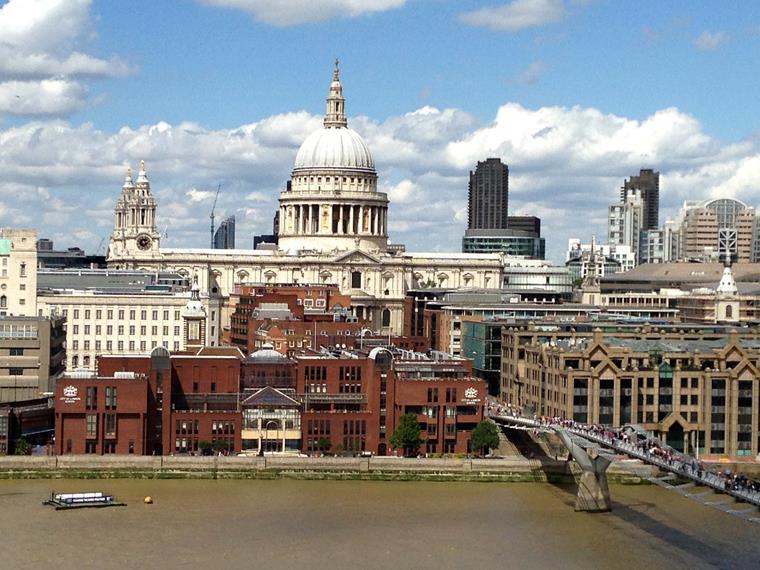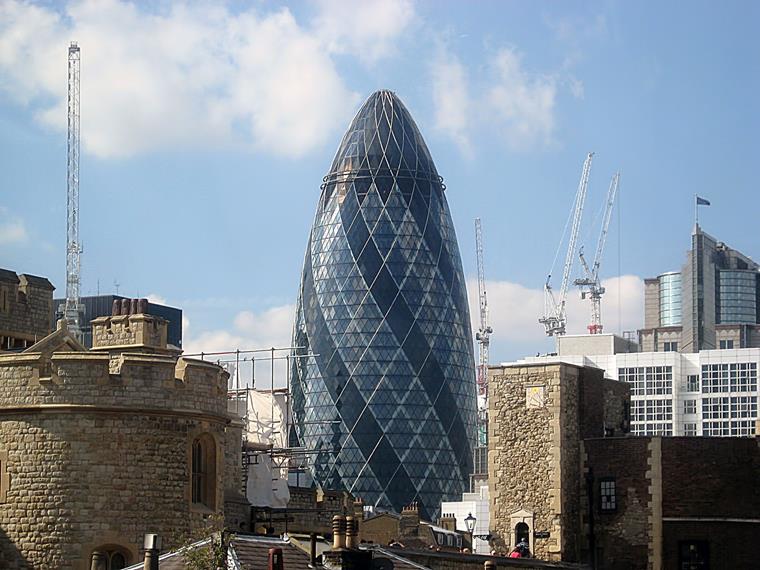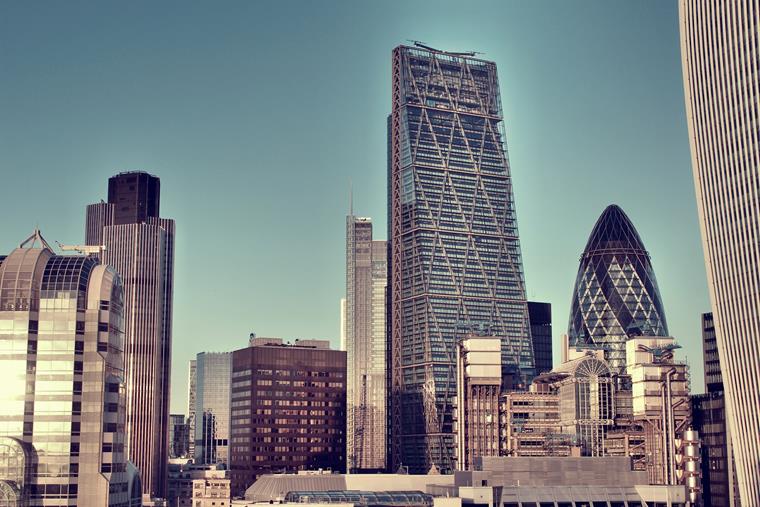The skyline of every major city in the world is unique. The reason for this is the kings (and queens) of buildings: skyscrapers. Sometimes in a classic cuboid shape, sometimes with unusual curvatures, and some of them are very special.
These special eccentricities among skyscrapers certainly attract attention. The fact is, nowhere in the world is there a similar collection of truly bizarre shapes as on the London skyline. We present: a screwed pickle, a beer glass next to it, and a glass tulip almost appeared there.
Although London has always been somewhat resistant to the construction of skyscrapers, over 200 skyscrapers have been planned here in the last few decades. However, what is the reason for these strange shapes? We explain the circumstances to you in a little more detail and note that urban planning is a bit more complicated than we would have thought.
London Skyline: Visual Axes and Height Limit
If you've been to London or seen pictures of the skyline, you know that it seems the city is rather simple and low at first glance, compared to other world cities. There is actually a very historical background to this. In London, a height limit for buildings around the famous St. Paul's Cathedral has been in effect since 1938.
Furthermore, clear visual axes had to remain unobstructed on the Dome, so it can be seen from the main squares of the city. One of these visual axes is about 8 miles in length.
The background to this is London's medieval city maps. Typical of cities planned in the Middle Ages are the rather arbitrary shapes of the plots and districts. About 400 years ago, church spires provided landmarks and typically dominated the cityscape.
St. Paul's Cathedral acted as the main landmark, with the tallest spire in the city (364 ft). To protect this view of the dome, the London Building Act of 1894 was passed, which prohibited buildings over 80 ft height.
Using clever tricks, architects have repeatedly circumvented this block, and soon it became 100 ft (about 30 m). In addition, it was decided that the view of the iconic St. Paul's Cathedral building from the most important city squares must be unobstructed. For this purpose, there were eight visibility corridors defined.
In the second half of the 20th century, the skyscraper boom came to Europe from the USA. A building over 492 ft (150 m) is considered a skyscraper. The John Hancock Center, the Twin Towers, and the Willis Tower are well-known examples of the steel giants taking off. The more popular skyscrapers became, the more softer the set rules were. In the end, London's first skyscraper was opened in 1980.
The opening of the NatWest Tower as the first skyscraper was a very special moment, and the idea of creating more buildings like this in the historic city was long discussed. First in 1991, the second skyscraper, One Canada Square, opened.
While discussions in the inner city managed to prevent any further construction planning, rapid development became apparent in the former port facilities. Canary Wharf was increasingly becoming a competitor to the City. Here, it was possible to build without annoying height restrictions, in stark contrast to the historically grown financial center in the City of London.
Banks, in particular, left the historic old town behind to build skyscrapers in Canary Wharf. This led to a rethink of the conservative urban planners in the city center. The Corporation of London increasingly gave in to the skyscraper lobby in order to keep investors in the City.
In the 2000s, the number of building permits for skyscrapers exploded, to the detriment of preservationists and fans of traditional London. By the way, the Crossrail Station was designed and calculated by our customer, using Dlubal structural analysis software. Here, you can find a unique timber structure, which has been in the heart of London since the end of March 2014.
Strange Construction Projects in London
And why do they look the way they do?
1) The Gherkin – Steel and Glass Vegetable
The first building we will look at is nicknamed "The Gherkin". The slender, screwed shape is actually reminiscent of a pickle, but how did it come about? A true masterpiece of engineering was originally planned.
Before the Millennium Tower became a pickle, architect Norman Foster, one of the most famous architects, created the original design of the Millennium Tower in 1992.
This original design was to extend to a height of 1,266 ft (386 m) and do credit to the term 'skyscraper'. However, London's urban planning was effective here, because the building would have blocked the view of St. Paul's Cathedral. Therefore, the height was reduced to 590.5 ft (180 m).
So we have clarified the height, but how did the strange screw shape come about? This involved one of the defined visual corridors and also possible downdrafts. The screwed facade allows for a clear view of the dome.
2) The Shard – London's Fragment
In 2000, architect Renzo Plano, in collaboration with Broadway Malyan, designed a very special skyscraper. A 1,312-foot-high tower was planned, but this idea also met with resistance, this time directly from the people, who contributed to the plan change in 2003 in favor of the view of St Paul's Cathedral.
The height was reduced to 1,089 ft, but that's not all. The width and shape were then modified. The building, and especially the top, should be as thin as possible to avoid affecting the view of the dome.
Transparent glass gives the building the appearance of a glass spire surrounding a concrete column; it was opened in 2013. This shape gives the name to the structure: a glass shard sticking out of the ground.
3) The Cheese Grater – Cheese Grater for London
Actually, you certainly tend to associate Ireland with cheese, but England also has a lot to offer: an oversized cheese grater, for example. What is this about? With a height of 738 ft (225 m), the Leadenhall Building in London's financial district is not exactly the tallest structure of its time, but the size was not the reason for its unusual shape this time.
The problems here lie in the original plans. Viewed from a certain angle, the outlines of Leadenhall and St. Paul's Cathedral would be very close together. This inappropriate break in style should have been counteracted in the planning process.
The architects involved were looking for a way to visually separate both buildings. The key idea: they simply leaned the front of the building back, giving it a wedge shape. In 2014, a triangular skyscraper opened, which looks like a cheese grater.
4) The Tulip – Tulip Next to Gherkin
In 2018, there were concrete plans for a new skyscraper. The plan was to build a tower with viewing platforms on the top. This was just a lookout point, which, of course, was not to be cost-free, and would not provide any offices or other benefits.
This building was widely discussed and became a contentious issue. In the end, it was decided that London didn't need a building to be just a lookout point. After all, there are enough of them on the roof terraces of the surrounding skyscrapers. Plans for the Tulip were permanently discarded in 2019 to protect the cityscape and the view of St. Paul's Cathedral.
Summary: London Skyline
London is still growing strongly and urgently needs more housing. The annual architecture report "Tall Buildings Survey" for 2022 shows: there are 583 buildings with 20 floors or more planned or under construction. Furthermore, there are projects for 341 high-rise towers with planning permission. 109 have been completed and 71 have at least partial approval.
So there is diligent construction, but why does the housing shortage remain? Again, the answer is quite simple. The new tall buildings mostly include expensive luxury apartments. Many residential buildings are simply copied and appear to be modular. Individuality is rare, and the biggest question is: who wants to live here or can afford it?
London is also known internationally for experimental architecture, which is often not popular among the locals. A prominent example of this is the “The Pint / The Walkie-Talkie” skyscraper, which we have already discussed in detail in another podcast episode.
More About Our PodcastArtistic freedom is also very important in architecture. At the same time, this is also a very historical city that wants to keep its traditional core. Especially after the end of the financial crisis in 2008, the construction of skyscrapers should serve as a sign of a new era and the implementation of abandoned construction projects.
It became necessary to balance modern urban planning with the preservation of the historical character. This always creates new challenges for London's skyline, which in turn leads to fascinating structures.




